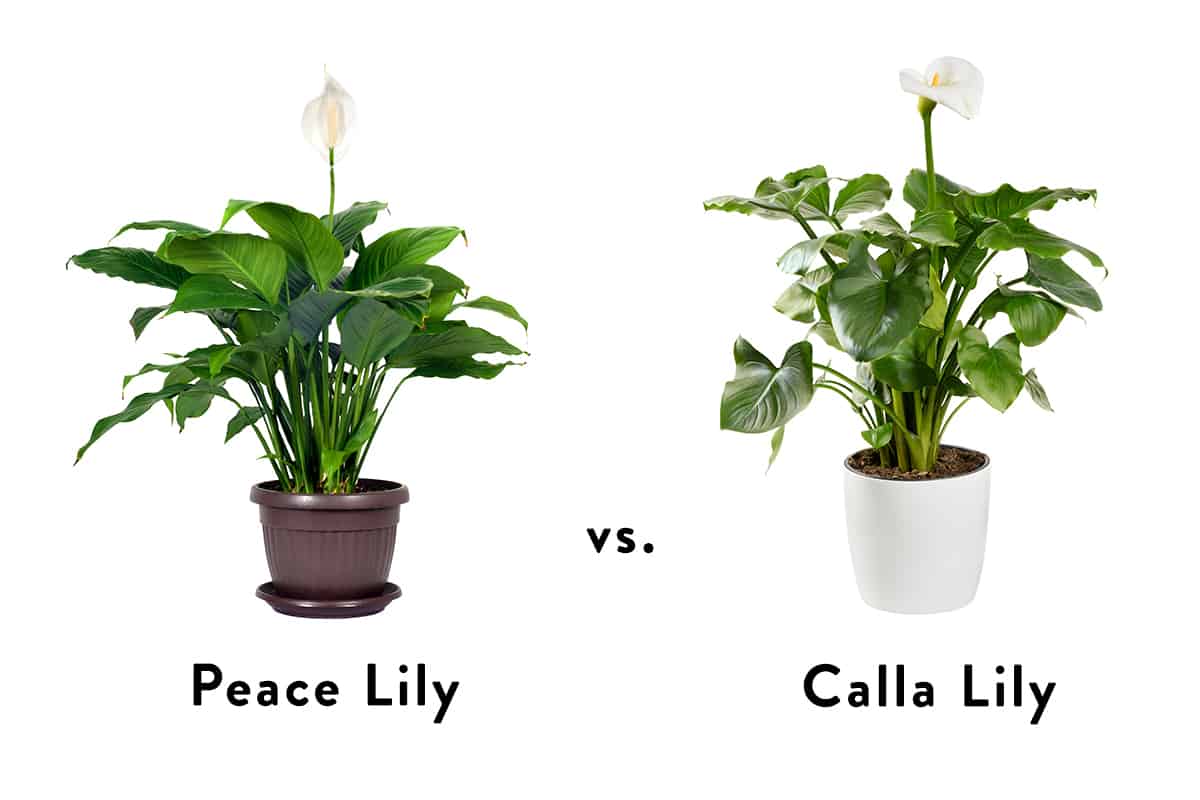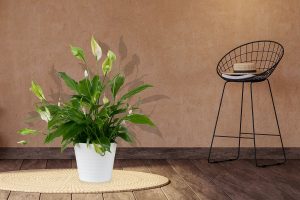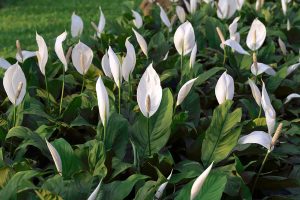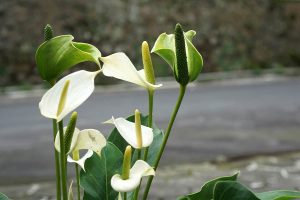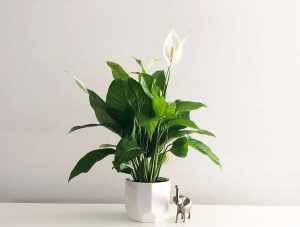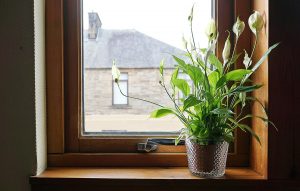Peace Lilies and Calla Lilies are often believed to be one and the same, but these two types of ‘lilies’ are actually entirely different plants. Here we look at their differences so that you can tell them apart and ensure they get the appropriate care.
Table of Contents
Are Peace Lilies and Calla Lilies True Lilies?
It’s important to understand that Peace Lilies and Calla Lilies are, in fact, not lilies at all. True Lilies belong to the Lilium genus in the plant family Liliaceae. Both Peace Lilies and Calla Lilies belong to a different family altogether; the Araceae family, which is also home to Philodendron and Monstera plants. Within this plant family, the Peace Lily and Calla Lily belong to two different genera.
The Peace Lily is in the Spathiphyllum genus, and the Calla Lily is in the Zantedeschia genus. The plants are commonly known as types of lilies because the spadix on the flowers is so similar to that of the true Lily flower. This is the spike-like component on a Peace Lily and Calla Lily, which is usually yellow.
Peace Lily and Calla Lily Differences
You would be forgiven for mistaking these plants for each other because they share a lot of similarities in terms of looks. Find out the best ways to identify them apart from each other below.
Growing medium
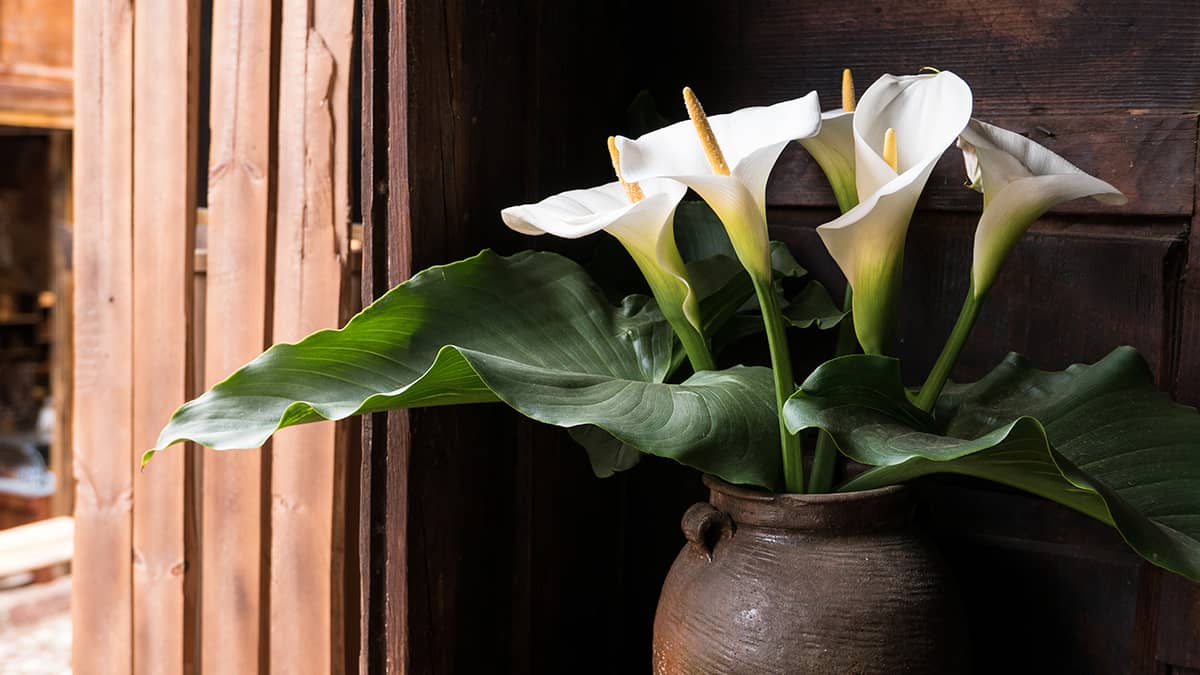
One of the most important things that differentiate Calla Lilies and Peace Lilies is the type of medium they can be grown in. This is important because if you get it wrong, then you will likely kill your plant. Peace Lilies are native to South American rainforests where rainfall is high, but it is also very hot, so the ground can dry up a little at times.
This means that Peace Lilies will grow best in soil that is moist but not wet. The soil of a Peace Lily should be well-draining to avoid waterlogging because these plants will not tolerate having their roots in standing water or excess moisture. By comparison, Calla Lilies are moisture-loving plants that will actually grow directly in water.
They can be commonly seen growing in bog-like environments, and they make great pond plants for the same reason. If you spot a plant growing in a pond or water feature and question whether it is a Calla Lily or a Peace Lily, you can be certain it is, in fact, a Calla Lily because a Peace Lily would not survive in such wet conditions. If you are growing a Calla Lily in soil, you need to ensure it is watered frequently to meet its high moisture needs.
Size
Peace Lilies come in various sizes, with dwarf varieties that do not exceed 1 foot in height and giant peace lily varieties that can grow up to 6 feet tall. Meanwhile, Calla Lilies will rarely grow to more than 2 or 3 feet in height.
If you spot a ‘Lily’ that is more than 3 feet tall, you can be fairly confident it is a Peace Lily and not a Calla Lily.
Flowers

The flowers of these two plants are similar, but once you understand the subtle differences, you should easily be able to differentiate these plants from each other based on their flowers. Interestingly, the part of the Calla Lily and Peace Lily, which most people refer to as the flower, is not a flower at all.
The actual flowers of these plants are positioned on the central spike of the bloom, known as the spadix. The spadix has numerous small bumps covering it, usually in a yellow color, and it is these that are the true flowers of the plant. The ‘petal’ that surrounds the spadix is, in fact, not a petal and instead is a type of modified leaf known as a spathe or a bract. It is the spathe that can help you tell the Peace Lily apart from the Calla Lily.
First of all, the spathe on a Peace Lily will only ever be white or off-white in color, while the spathe on a Calla Lily can be pink, white, purple, yellow, or cream. If your plant produces flowers with spathes in color other than white, it is most certainly a Calla Lily, not a Peace Lily.
The shape of the spathe is also different on these two plants. On a Calla Lily, the spathe wraps around the spadix and flares out at the tip, creating an almost trumpet-like shape. On a Peace Lily, the spathe does not wrap around the spadix and instead leans to one side as if sheltering the spadix from seeing behind itself.
Light
Both of these plants cannot tolerate direct sunlight since it causes the foliage to burn, and they both prefer to grow in bright, indirect light, with some shade. The biggest difference regarding lighting preferences between these two plants is that Peace Lilies are able to grow in full shade, while Calla Lilies cannot.
If you have a Calla Lily, it’s vital that you don’t mistake it for a low-light Peace Lily because denying it of sunlight will surely lead to its demise. Ideally, both Calla Lilies and Peace Lilies should be exposed to several hours of bright, indirect light each day. This will result in lush foliage and prolific blooming.
An east or west-facing window would work well; just ensure they are sheltered during the brightest portion of the day. Outside, plant these species beneath the dappled shade of a taller tree or large shrub.
Foliage
The foliage on Peace Lilies and Calla Lilies is not drastically different, but if you look closely, you should be able to see the distinctions between the two.
Firstly, the color of the foliage on Calla Lilies is significantly paler compared to Peace Lily foliage. Calla Lilies have light to medium green leaves, while Peace Lilies tend to be much darker and deeper shades of green. Both plants can have variegated foliage, but the variegations on a Peace Lily will be much more dramatic.
Variegated Calla Lilies will have small cream specks on their leaves, while variegated Peace Lilies can have thick white stripes (White Strip Peace Lily), large splotches of pale green and cream (Picasso Peace Lily), or a silver fade-out (Platinum Mist Peace Lily). The foliage shape also differs between Calla Lilies and Peace Lilies.
Peace Lilies typically have lance-shaped leaves coming to a point at the tip, while Calla Lilies leaves are more arrow-shaped and similar to Philodendron leaves.
Temperature
The Calla Lily is native to southern Africa, while the Peace Lily hails from South America. This, of course, means that the two different species are accustomed to different climate conditions.
The Peace Lily is able to tolerate much higher temperatures than the Calla Lily, while the Calla Lily can be exposed to colder temperatures without suffering damage. Both of these plants work well as houseplants because they enjoy consistent warmth, but if you want to grow them outdoors, you’ll need to make sure your climate is appropriate.
Calla Lilies can be grown outdoors in USDA hardiness zones 8 to 10, while Peace Lilies are better suited to USDA hardiness zones 10 through 12.
